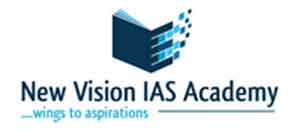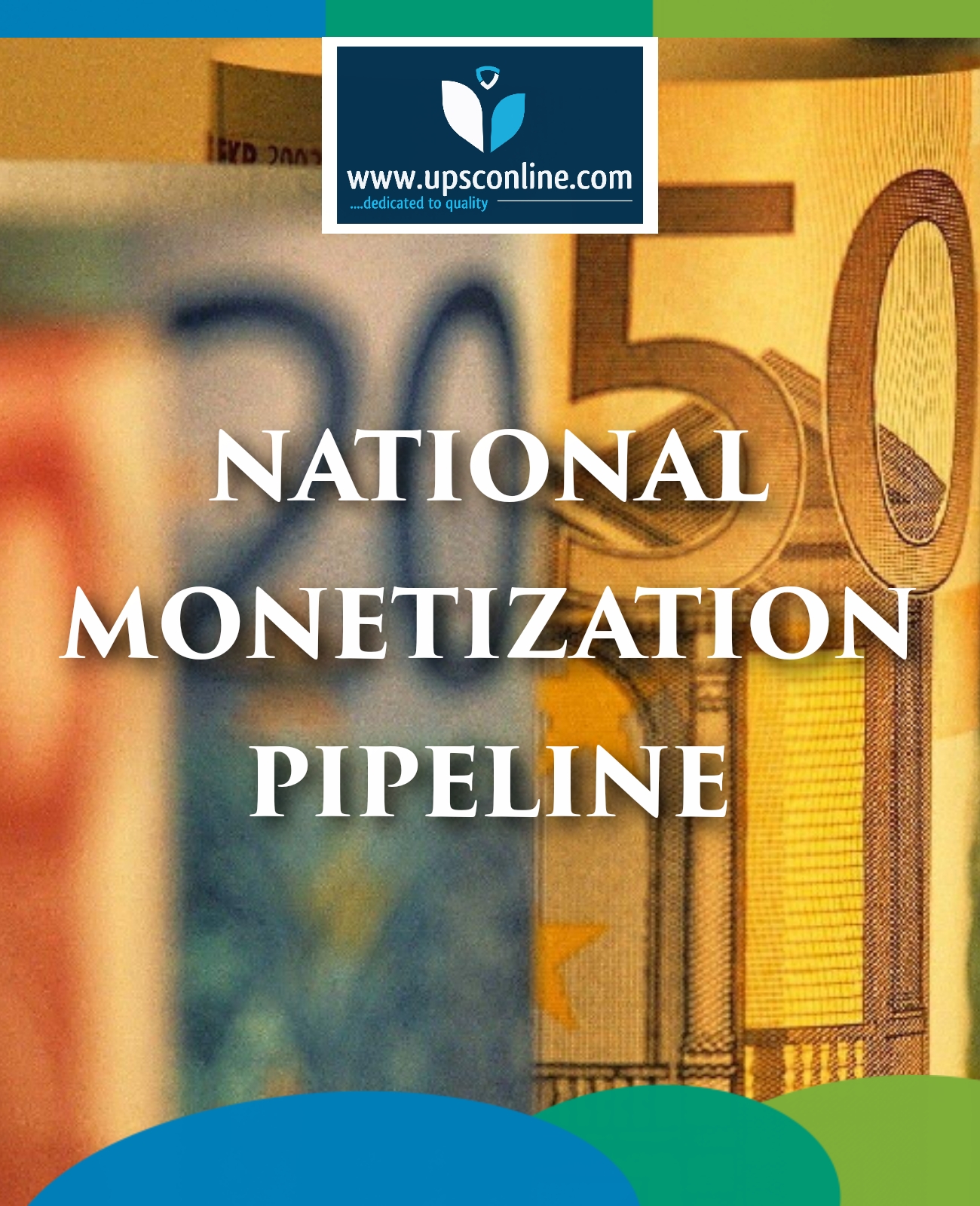Asset monetization is the process of unlocking the value of investment made in public assets which have not yielded appropriate or potential returns so far.
National Monetization Pipeline (NMP) intended in unlocking value in infrastructure assets by involving private companies across the different sectors.
As per the Ministry of finance, asset monetization does not involve selling of land and it is about monetizing brownfield assets. The projects have been identified across sectors, with roads, railways and power being the top segments.
According to Ministry ,“Ownership of assets will remain with the government and there will be a mandatory hand-back.” Asset monetization will unlock resources and lead to value unlocking.”
In a monetization transaction, the government is basically transferring revenue rights to private parties for a specified transaction period in return for upfront money, a revenue share, and commitment of investments in the assets.
Real estate investment trusts (REITs) and infrastructure investment trusts (InvITs), for instance, are the key structures used to monetize assets in the roads and power sectors.
These are also listed on stock exchanges, providing investors liquidity through secondary markets as well. While these are a structured financing vehicle, other monetization models on PPP (Public Private Partnership) basis include: Operate Maintain Transfer (OMT), Toll Operate Transfer (TOT), and Operations, Maintenance & Development (OMD).
OMT and TOT have been used in highways sector while OMD is being deployed in case of airports.
According to Union Minister of finance , NMP estimates aggregate monetization potential of ₹6 lakh crores through core assets of central government over the four-year period from FY 2022 to FY 2025 .
The NMP has been announced to provide a clear framework for monetisation and give potential investors a ready list of assets to generate investment interest. It will have a dashboard to track the progress and provide visibility to investors.
The government has stressed that these are brownfield assets, which have been “de-risked” from execution risks, and therefore should encourage private investment.
Structuring the monetization transactions, providing a balance risk profile of assets, and effective execution of the NMP will be key challenges.
Union Budget 2021-22 had identified monetisation of operating public infrastructure assets as a key means for sustainable infrastructure financing.
NITI Aayog in consultation with infra line ministries has prepared the report on NMP.
The aggregate asset pipeline under NMP over the four-year period is indicatively valued at ₹6 lakh crore. The estimated value corresponds to 14% of the proposed outlay for Centre under the National Infrastructure Pipeline (₹43 lakh crore)
According to Ministry of Finance, the end objective of this initiative is to enable “infrastructure creation through monetization” wherein the public and private sector collaborate, each excelling in their core areas of competence, so as to deliver socio-economic growth and quality of life to the country’s citizens.
NHAI & PGCIL will be taking the charge for this. Transmission assets worth ₹7,000 crores will be transferred to PGCIL.
These include one InvIT (Infrastructure Investment Trust) each sponsored by the National Highways Authority of India (NHAI) and Power Grid (PGCIL) that will attract international and domestic institutional investors. As many as 25 Airports Authority of India (AAI) airports, including the ones at Chennai, Bhopal, Varanasi and Vadodara, as well as 40 railway stations, 15 railway stadiums and an unidentified number of railway colonies have been identified for getting private investments. Other core infrastructure assets that will be rolled out under the Asset Monetization Program are: NHAI operational toll roads; transmission assets of PGCIL; oil and gas pipelines of GAIL, IOCL and HPCL; AAI airports in Tier-II and -III cities; other railway infrastructure assets; warehousing assets of CPSEs (Central Public Sector Enterprises) such as Central Warehousing Corporation and NAFED; and sports stadia.
The NMP will run co-terminus with the National Infrastructure Pipeline of Rs 100 lakh crore announced in December 2019 .
The estimated amount to be raised through monetisation is around 14% of the proposed outlay for the Centre of Rs 43 lakh crore under NIP.
The other assets on the NMP list include: 26,700 km of roads, railway stations, train operations and tracks, 2,8608 Ckt km worth of power transmission lines, 6 GW of hydroelectric and solar power assets, 2.86 lakh km of fibre assets and 14,917 towers in the telecom sector, 8,154 km of natural gas pipelines and 3,930 km of petroleum product pipelines.
In the roads sector, the government has already monetised 1,400 km of national highways worth Rs 17,000 crore. Another five assets have been monetised through a PowerGrid InvIT raising Rs 7,700 crore.
Also, 15 railway stations, 25 airports and the stake of central government in existing airports and 160 coal mining projects, 31 projects in 9 major ports, 210 lakh MT of warehousing assets, 2 national stadium and 2 regional centers, will be up for monetization.
Redevelopment of various government colonies and hospitality assets including ITDC hotels is expected to generate Rs 15,000 crore.
Among the key challenges that may affect the NMP roadmap are: lack of identifiable revenues streams in various assets, level of capacity utilization in gas and petroleum pipeline networks, dispute resolution mechanism, regulated tariffs in power sector assets, and low interest among investors in national highways below four lanes.
Practical execution of the plan remains key to its success. Structuring of monetization transactions is being seen as key.
The slow pace of privatization in government companies including Air India and BPCL, and less-than-encouraging bids in the recently launched PPP initiative in trains, indicate that attracting private investors interest is not that easy.
Monetisation potential of toll road assets , is limited by the percentage of stretches having fourlane and above configuration. .
As per the NMP framework, the total length of national highway (NH) stretches with four-lane and above is estimated to be about 23% of the total NH network .
The government has used four key methods to arrive at indicative value of Rs 6 lakh crore worth of assets to be monetized . This is based on the suitability of the valuation approach to the nature of the assets and the accompanying revenue streams. For roads, power transmission and telecom tower assets, the government has used the market approach, where the value is determined based on comparable market transactions for the identified asset classes. In case of proposed monetization of 26,700 km of national highways , the per km estimated is based on recent TOT (toll operate transfer) transactions and asset matrix to be monetized. While average realization by NHAI under past TOT concessions successfully awarded has been in the range of Rs 9-14 crore per km, a lower range at Rs 6 crore per km has been assumed to factor in certain lower traffic stretches.
The similar approach has been used to assess the estimated value of power transmission assets . The monetization value of the transmission assets has been considered as Rs 1.58 crore per circuit (ckt) km, based on reference value on Power Grid’s recently closed InvIT. For total assets of 28,608 ckt km, the estimated value comes to Rs 45,200 crore.
Capex approach has been considered for monetization through PPP (public-private partnership)-based models envisaging capital expenditure by private sector. The principle under the capex approach is that in the absence of the asset monetization transaction, the Public Asset Owner would have to incur the outlay towards augmentation and O&M (operations & maintenance) of the brownfield asset.
This method has been deployed to value most assets in sectors including ports, airports, railway stations, passenger trains, freight terminals, railway colonies redevelopment, track infra under dedicated freight corridor, sports stadium, warehousing, BharatNet fibre asset, mining, and urban housing redevelopment.
Book-value approach has been used for asset classes where information on comparable market transactions or estimated capex investment is not available. The book value of the assets has been estimated considering the average capex cost incurred to construct a similar category of asset adjusted for the age of the asset and number of years of operation. Power generation assets have been valued at book value.
Enterprise-value approach has been considered for assets where information on existing revenue stream is available or can be reasonably projected based on assumptions and/or available data on prevailing tariff for an asset/asset class.
In such cases, net present value of discounted cash flows has been worked out to determine indicative monetisation value. This method has been used to value natural gas and product pipelines as well as for track, signalling, and overhead equipment.
The National Monetization Pipeline was not discussed in Parliament or any Parliamentary committee, or the consultative committee of the Finance Ministry.
While roads, railways and power account for around 65 per cent of the proceeds of the programme, the list of assets detailed is spread across sectors such as telecom, aviation, mining and warehousing, suggesting a more wide-ranging programme. While the targets are aggressive, a four-year roadmap, providing in detail the assets the government intends to lease, should provide clarity to investors and generate interest.



0 Comments